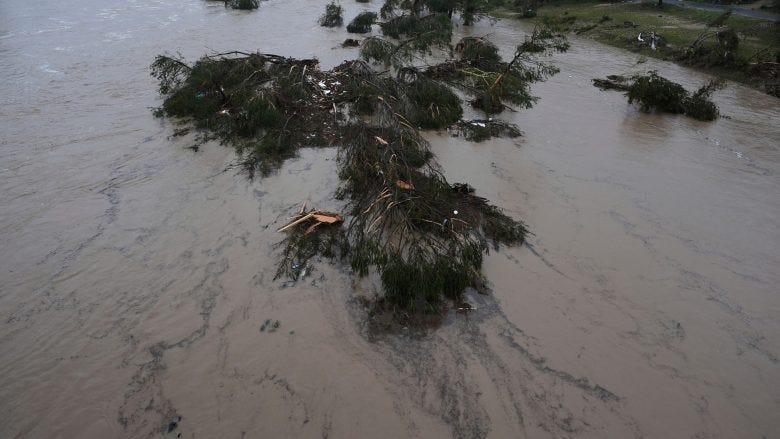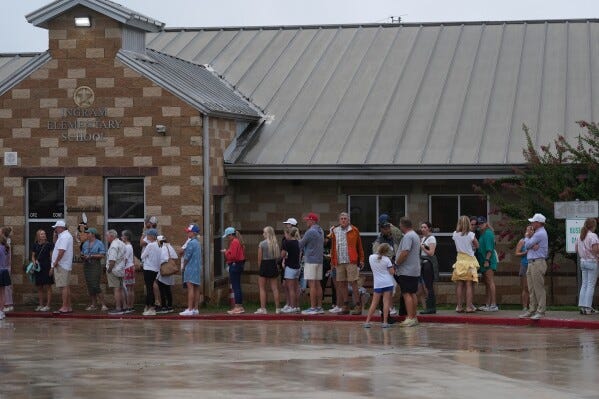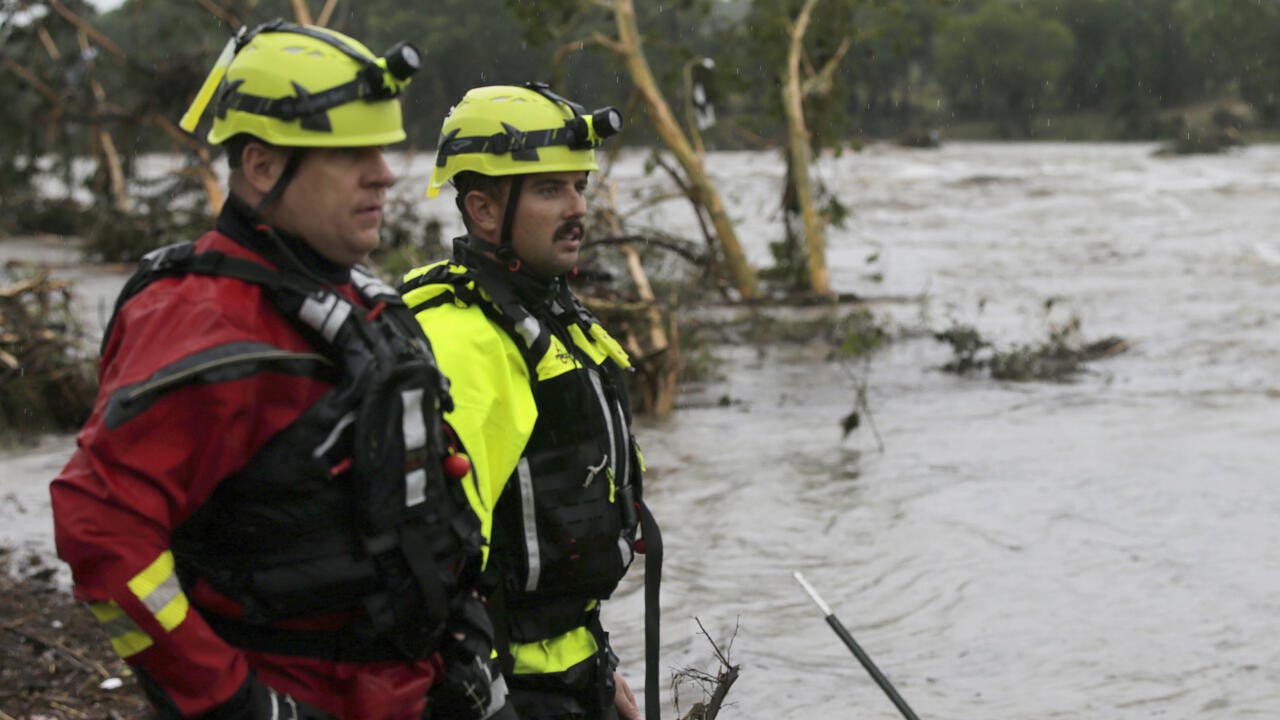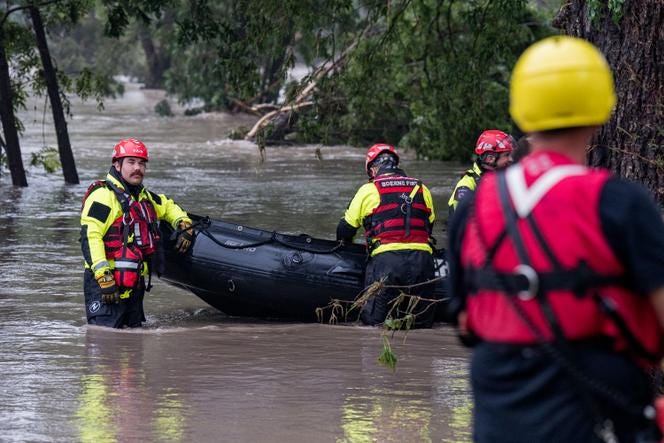The Texas Flash Flood Tragedy: Did DOGE'S Cuts To NOAA And FEMA Play A Huge Roll In This Disaster?
On July 4, 2025, a catastrophic flash flood tore through Texas Hill Country, claiming at least 27 lives and leaving 13 girls missing from Camp Mystic
Introduction
On July 4, 2025, a catastrophic flash flood tore through Texas Hill Country, claiming at least 27 lives and leaving 13 girls missing from Camp Mystic, a private all-girls Christian summer camp along the Guadalupe River. The disaster, triggered by torrential rains dumping up to 12 inches of water in mere hours, has left communities reeling and raised urgent questions about preparedness, response, and the broader forces at play. Was this tragedy exacerbated by the Department of Government Efficiency (DOGE) defunding and firing of National Oceanic and Atmospheric Administration (NOAA) employees? Did cuts to the Federal Emergency Management Agency (FEMA) hinder rescue efforts? Why was President Donald Trump unaware of the crisis until a day later? And, critically, does this event serve as stark evidence of climate change’s intensifying grip on our planet? This opinion piece delves into these questions, arguing that a combination of policy missteps and climate-driven extreme weather created a perfect storm of devastation—and calls for accountability and action to prevent future tragedies.
The Tragedy Unfolds: A Night of Horror in Texas Hill Country
The flash flood struck Kerr County, Texas, with ferocious speed. The Guadalupe River, swollen by 4 to 12 inches of rain, rose 26 feet in just 45 minutes, transforming campgrounds and homes into deadly torrents. Camp Mystic, a nearly century-old institution hosting 750 campers, was among the hardest hit. By July 5, 27 fatalities were confirmed, including 18 adults and 9 children, with 13 girls still unaccounted for. Rescue operations, involving over 850 air and ground rescues, were hampered by washed-out roads and ongoing severe weather, with flash flood warnings extending into Saturday.
Eyewitness accounts paint a harrowing picture. Bud Bolton, a Kerrville resident, described floodwaters sweeping away an RV with people inside, their screams echoing helplessly. Lorena Gullen, a local restaurant owner, recounted vehicles being carried off by “raging water,” some with occupants still inside. The National Weather Service (NWS) issued flash flood emergencies for Comal, Kendall, and Travis counties, but the sheer volume of rain—described as a “one-in-100-years” event—overwhelmed local infrastructure and response capabilities.
DOGE’s Defunding of NOAA: A Blow to Weather Forecasting
The Department of Government Efficiency, spearheaded by figures like Elon Musk and Vivek Ramaswamy, has pushed aggressive federal budget cuts, including significant reductions to NOAA’s staffing and programs. In recent months, the Trump administration slashed NOAA’s workforce and proposed eliminating its Office of Oceanic and Atmospheric Research, which coordinates critical climate and weather research. These cuts, part of a broader DOGE agenda to “streamline” government, have sparked concerns about diminished forecasting capabilities.
NOAA’s role in weather prediction is indispensable. Its data underpins NWS forecasts, which engineers and local officials rely on to design infrastructure and issue warnings. The agency’s precipitation probability estimates are critical for anticipating extreme events like flash floods. However, the July 4 flood exposed forecasting limitations. The European Centre for Medium-Range Weather Forecasts (ECMWF) predicted 192mm of rain, but nearly double that amount fell, highlighting a known issue: even advanced models often underestimate extreme rainfall. NOAA’s reduced capacity, exacerbated by staff cuts, likely hindered real-time adjustments to these forecasts.
Social media posts on X have amplified this concern, with users claiming that DOGE’s cuts left Texas “blindsided” by the storm. While these claims lack definitive evidence linking specific NOAA layoffs to the tragedy, the broader erosion of forecasting resources raises red flags. For instance, NOAA’s planned updates to precipitation models, set to include climate change projections starting in 2026, were disrupted by budget cuts and the dismissal of experts working on the National Climate Assessment. Without robust forecasting, communities like Kerrville faced the flood with inadequate warning, potentially costing lives.
FEMA Cuts and the Rescue Response: A System Stretched Thin
FEMA, the backbone of U.S. disaster response, has also faced DOGE-driven cuts. President Trump’s June 11, 2025, statement about phasing out FEMA after the hurricane season, shifting responsibilities to states, signaled a seismic shift in disaster policy. Texas, which received $18 billion in FEMA aid from 2017 to 2024, relies heavily on federal support for its frequent billion-dollar disasters—68 such events occurred in the state from 2020 to 2024 alone. Reducing FEMA’s capacity, including a reported 33% staff reduction, risks leaving states like Texas without adequate resources.
The Texas flood response showcased both heroism and strain. Over 850 people were rescued, with the Texas National Guard, U.S. Coast Guard, and local responders deploying helicopters and boats. However, the scale of the disaster overwhelmed local capabilities. Kerr County Sheriff Larry Leitha noted that emergency workers operated around the clock, but washed-out roads and ongoing rain delayed access to isolated camps. The Houston Fire Department, 300 miles away, sent tactical units to assist, underscoring the need for external support.
Critics argue that FEMA’s reduced capacity slowed the federal response. While President Trump pledged aid and Homeland Security Secretary Kristi Noem was dispatched to Texas, the initial response relied heavily on state and local resources. Texas Governor Greg Abbott’s disaster declaration expedited state aid, but the absence of a fully staffed FEMA likely delayed coordinated federal efforts. For a camp like Mystic, located in “flash flood alley,” timely evacuations could have saved lives, but the rapid river rise—26 feet in 45 minutes—left little room for error.
Trump’s Delayed Awareness: A Leadership Gap?
President Trump’s response to the flood, described as “terrible” and “shocking,” came late on July 4, nearly 24 hours after the disaster struck. Speaking aboard Air Force One, he pledged federal support and noted coordination with Governor Abbott. However, his delayed awareness, coupled with social media posts on Truth Social only on July 5, raised questions about the administration’s crisis management. Lieutenant Governor Dan Patrick, acting as governor, reported multiple White House calls, suggesting some engagement, but the president’s initial silence fueled criticism.
This delay may reflect broader administrative priorities. The Trump administration’s focus on DOGE’s cost-cutting agenda, including defunding climate-related programs, may have diverted attention from disaster preparedness. Texas leaders, including Senators Ted Cruz and John Cornyn, emphasized their coordination with local officials, but the federal response appeared reactive rather than proactive. In a region prone to extreme weather, a 24-hour lag in presidential acknowledgment is concerning, especially when lives, including those of 13 missing girls, hang in the balance.
Climate Change: The Unseen Driver of Disaster
The Texas flood is a stark reminder of climate change’s role in amplifying extreme weather. Warmer air, a consequence of rising global temperatures, holds more moisture—about 7% more per 1°C of warming. This fuels heavier, more intense rainfall, as seen in Kerr County, where 6.5 to 12 inches fell in hours. The National Climate Assessment notes a 20% increase in days with at least two inches of rain in eastern Texas since 1900, with a projected 10% rise in extreme rain intensity by 2036. These trends align with global patterns, where fossil fuel-driven warming intensifies storms, making events like the July 4 flood more frequent and severe.
The Guadalupe River’s rapid rise mirrors past climate-driven floods, such as Hurricane Harvey in 2017, where warming increased rainfall intensity by up to 38%. Texas’s “flash flood alley” is particularly vulnerable due to its hilly terrain and impermeable soils, which channel water into destructive torrents. The failure of local infrastructure, like storm drains designed for outdated rainfall estimates, underscores the need for climate-resilient planning—precisely what NOAA’s defunded research programs were meant to support.
Skeptics may argue that extreme floods occurred historically, citing natural variability or events like the 1987 Comfort flood that killed 10 teenagers. However, the scale and frequency of recent disasters—68 billion-dollar events in Texas over five years—point to a climate-driven escalation. Denying this link, as some Texas leaders have done by resisting climate-focused legislation, risks leaving communities unprepared for a future of intensifying storms.
Policy Failures and Climate Denial: A Dangerous Mix
The convergence of DOGE’s cuts to NOAA and FEMA, delayed federal leadership, and climate change’s role in the Texas flood paints a troubling picture. NOAA’s diminished capacity likely weakened forecasting accuracy, leaving Camp Mystic and other communities vulnerable. FEMA’s reduced resources strained rescue efforts, forcing reliance on overstretched local responders. Trump’s late response, while eventually supportive, highlights a disconnect in crisis management. Above all, the refusal to prioritize climate resilience—evident in DOGE’s targeting of “climate” programs—exacerbates the risks posed by a warming planet.
Texas’s resistance to climate-focused policies is particularly galling. State leaders have repeatedly blocked legislation requiring agencies to plan for climate-driven disasters, even as events like the Ike Dike project, meant to protect against coastal flooding, face funding uncertainties under DOGE’s budget cuts. This denialism, coupled with federal rollbacks, leaves Texans on the front lines of climate change without the tools or support needed to adapt.
A Call to Action: Subscribe to Interstellar News
The Texas flash flood tragedy is not just a local story—it’s a global warning. At Interstellar News, we are committed to uncovering the truth behind such disasters, holding leaders accountable, and amplifying the science of climate change. As a Canadian publication, we refuse to bow to political pressures, including those from the Trump administration, to downplay or deny the climate crisis. Our independence allows us to report fearlessly, exposing the impacts of policy failures and advocating for solutions.
A paid subscription to Interstellar News—just $5 a month—ensures we can continue this vital work. Your support funds investigative journalism, expert analysis, and coverage of global environmental issues, free from corporate or political influence. By subscribing, you join a community dedicated to truth and action, helping us push for policies that protect vulnerable communities from climate-driven disasters. click the subscribe button today and become part of the solution. Together, we can demand accountability, champion science, and build a future where tragedies like the Texas flood are not repeated.










